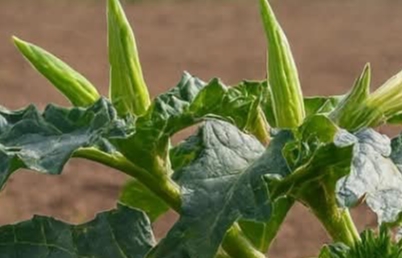The Enigmatic Beauty of Datura StramoniumPart of the nightshade family (Solanaceae), alongside tomatoes and potatoes, Datura stramonium is native to the Americas but thrives globally in disturbed soils like roadsides, pastures, and gardens. Its large, white or pale purple trumpet-shaped flowers emit a heavy, intoxicating fragrance at night, while its spiny, oval seed pods burst open to reveal small black seeds. Growing up to 1.5–2 meters tall with broad, lobed leaves, this plant is both a botanical marvel and a silent hazard.🧪 A Cocktail of Toxic PowerDatura’s allure comes from its potent alkaloids—atropine, scopolamine, and hyoscyamine—which affect the central and peripheral nervous systems by blocking acetylcholine, a key neurotransmitter. These compounds create a range of effects, from mild sedation to vivid hallucinations, but they’re a double-edged sword. In small, controlled doses, they’ve been used historically for medicinal purposes, but even slight miscalculations can lead to delirium, coma, or worse.💫 Historical and Cultural SignificanceDatura stramonium has a rich history woven into traditional practices:🔮 Spiritual Rituals: Some Native American tribes used it in vision quests, believing it induced prophetic dreams.🩺 Traditional Medicine: In tiny doses, it was employed for asthma, muscle spasms, and pain relief, though its narrow therapeutic range made it risky.🧙 Folklore and Witchcraft: In medieval Europe, it was rumored to be a key ingredient in “witches’ flying ointments,” linked to altered states of consciousness.While its medicinal potential is notable, its toxicity makes it a dangerous choice for anyone without expert knowledge.⚠️ The Dark Side: Datura’s Deadly RisksEvery part of Datura stramonium—leaves, flowers, seeds, and roots—is loaded with toxic alkaloids that can cause severe poisoning, even through skin contact. The symptoms are alarming and can escalate quickly:😵 Hallucinations and Delirium: Unlike other hallucinogens, Datura’s visions are often frightening, disorienting, and indistinguishable from reality.🥵 Dry Mouth and Extreme Thirst: Its anticholinergic effects halt saliva production, causing intense discomfort.👀 Blurred Vision and Dilated Pupils: These can persist for days, even after other symptoms fade.💓 Rapid Heartbeat and Fever: Severe cases may lead to seizures, cardiac arrest, or death.🗣️ Difficulty Swallowing and Speaking: A hallmark of acute poisoning.💤 Coma or Death: High doses can cause respiratory failure, making Datura potentially fatal.Accidental poisonings are a real concern, especially since Datura is sometimes grown as an ornamental plant or misused recreationally for its hallucinogenic effects.🚨 High-Risk Groups and DangersDatura poses serious threats to specific groups:👶 Children and Pets: The spiny seed pods can attract curious kids or animals, leading to accidental ingestion.🌱 Gardeners and Foragers: Mistaking Datura for edible plants can result in poisoning.🎉 Recreational Users: Those seeking its hallucinogenic effects often misjudge doses, leading to dangerous overdoses.🛡️ How to Stay Safe Around DaturaTo protect yourself and others from Datura’s dangers, follow these precautions:🌳 For Gardeners and Homeowners:Avoid planting Datura in home gardens, especially if you have children or pets.Wear gloves when handling any part of the plant to prevent skin absorption.Dispose of Datura safely by burning or sealing in plastic bags to avoid accidental exposure.📚 For Parents and Educators:Teach children to avoid wild plants and their seeds.Warn teenagers about the life-threatening risks of recreational Datura use.🏥 In Case of Suspected Poisoning:Seek emergency medical attention immediately.Do not induce vomiting unless instructed by a poison control expert.Provide details about the plant part and amount consumed for proper treatment.Why Datura Captivates and Cautions UsDatura stramonium is a plant of stark contrasts—its beauty and historical significance draw us in, but its toxicity demands caution. It’s a reminder of nature’s complex balance, where healing and harm often coexist. For those fascinated by botanical medicine, Datura is a powerful example of why knowledge and respect are essential when working with plants. Its striking flowers may tempt you, but their hidden dangers make it a plant best admired from a distance.🌍 Respect Nature’s Double-Edged GiftDatura stramonium isn’t just a weed—it’s a botanical enigma that commands awe and caution. If you spot its trumpet-shaped flowers in your garden, don’t be quick to touch or taste. Instead, remove it safely and educate others about its risks. By staying informed, you can appreciate its fascinating history while protecting yourself and loved ones from its dark side. Share this knowledge, and let Datura remind you that even the most beautiful plants can hide a dangerous secret
This Stunning Plant Grows Everywhere, But Its Dark Secret Could Cost You
